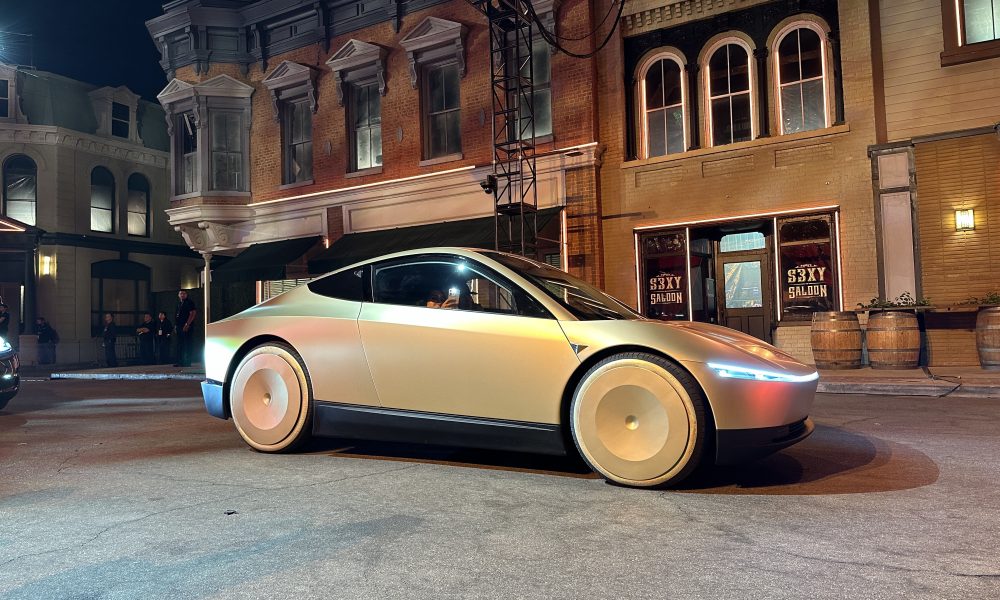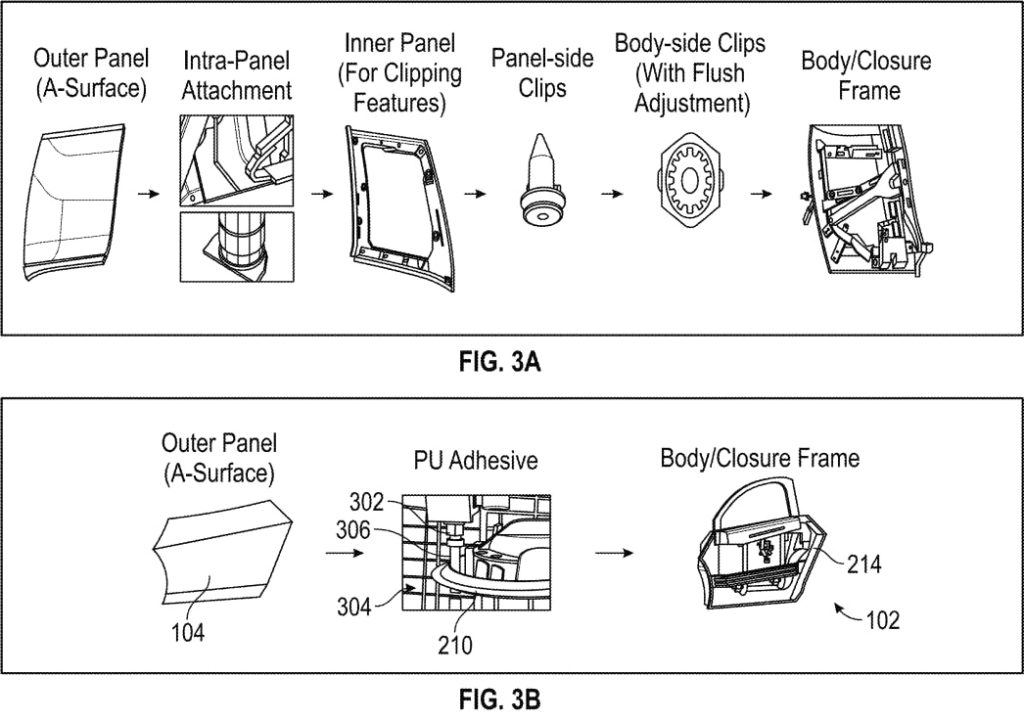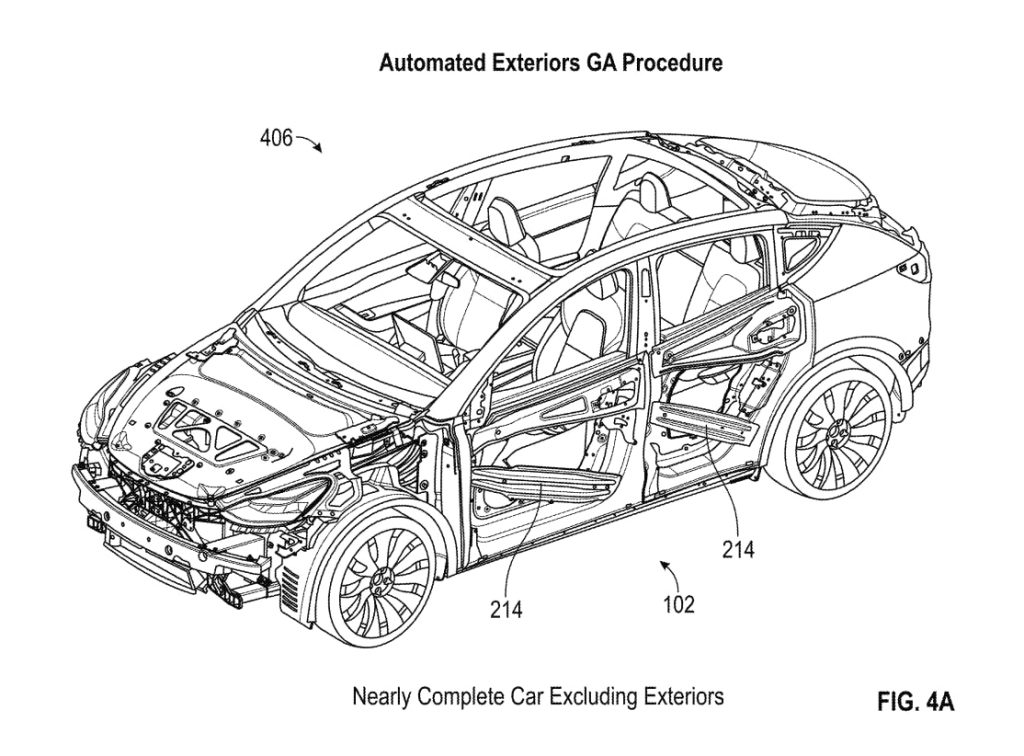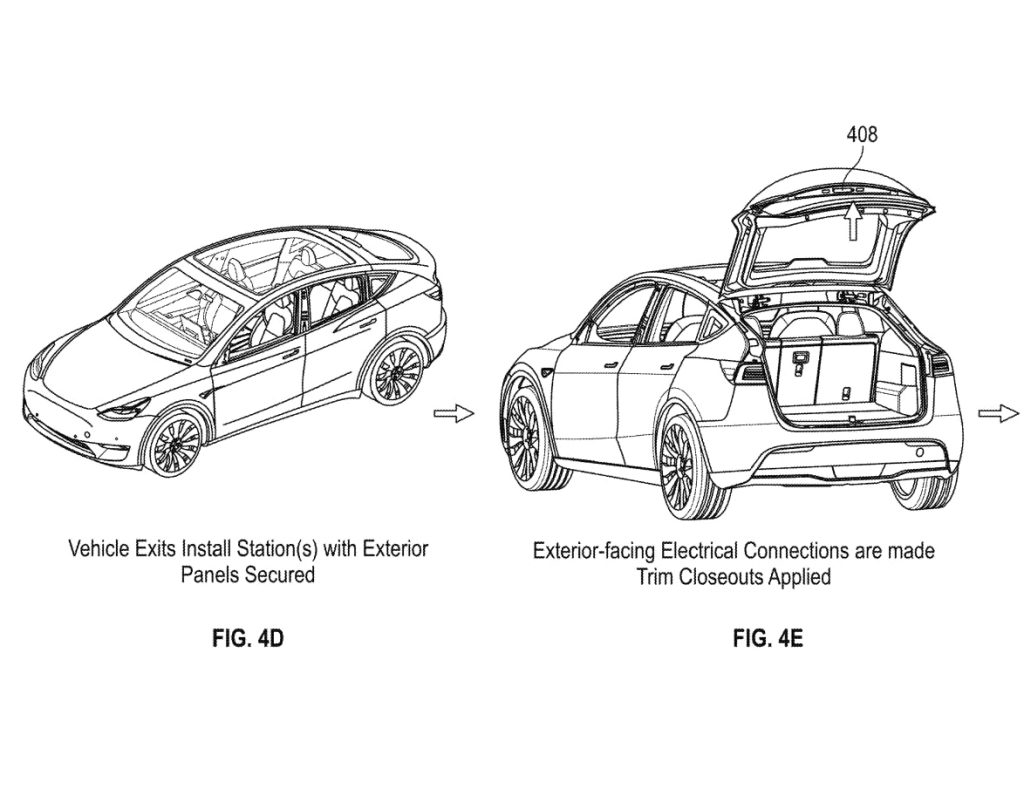Tesla has been granted a new patent for its “Unboxed Process” of manufacturing, which aims to enhance affordability for customers by increasing efficiency at the manufacturing stage.
This is one way the company aims to create a larger impact from start to finish, especially with upcoming vehicles. For those who are not familiar, the Unboxed Process was first unveiled by Tesla back in 2023 during its “Investor Day.”
The company brought forth the idea that vehicle manufacturing could shift from traditional assembly lines, making production more efficient, more cost-effective, and more scalable for the future, especially with mass-market models like Cybercab.
The process includes utilizing past methods that Tesla has brought into automotive manufacturing, including Gigacasting and structural battery integration, with more efficient “post-manufacturing” processes, like pre-painting.
Tesla describes the main advantages in the patent:
“The present disclosure relates to an automated system and method for assembling exterior vehicle parts to a vehicle assembly structure. The system utilizes an automated assembly cell with fixtures corresponding to each exterior vehicle part and references a global datum for precise alignment…The method improves assembly efficiency by compensating for substructure irregularities with an engineered adhesive gap and allows for continued assembly during adhesive curing through tacking operations.”
Instead of traditional welding strategies, the company plans to use a different bonding method, through adhesives.
The patent goes on:
“In described examples, a modular vehicle architecture allows for the assembly of a vehicle in sections, which are then joined in a final assembly operation. This approach eliminates the traditional need for welding stamped panels and applying secondary coatings or painting at the full vehicle assembly level. Instead, the vehicle can be constructed in parts, with metal surface treatments like e-coating and painting applied beforehand.”
The goal behind this manufacturing process is that Tesla will be able to build more vehicles at a faster rate for a lower price, something it believes it will need to accomplish as it addresses autonomy and Robotaxis, which are in higher demand.
With this rate of speed of manufacturing, Tesla says traditional manufacturing methods have the potential consequence of “compounding errors,” as “any slight misalignment or variance can add up.”
There is a refined focus on efficiency, while also recognizing the importance of build quality. This should eliminate most of the issues Tesla would confront with its current, more traditional, linear manufacturing processes.






